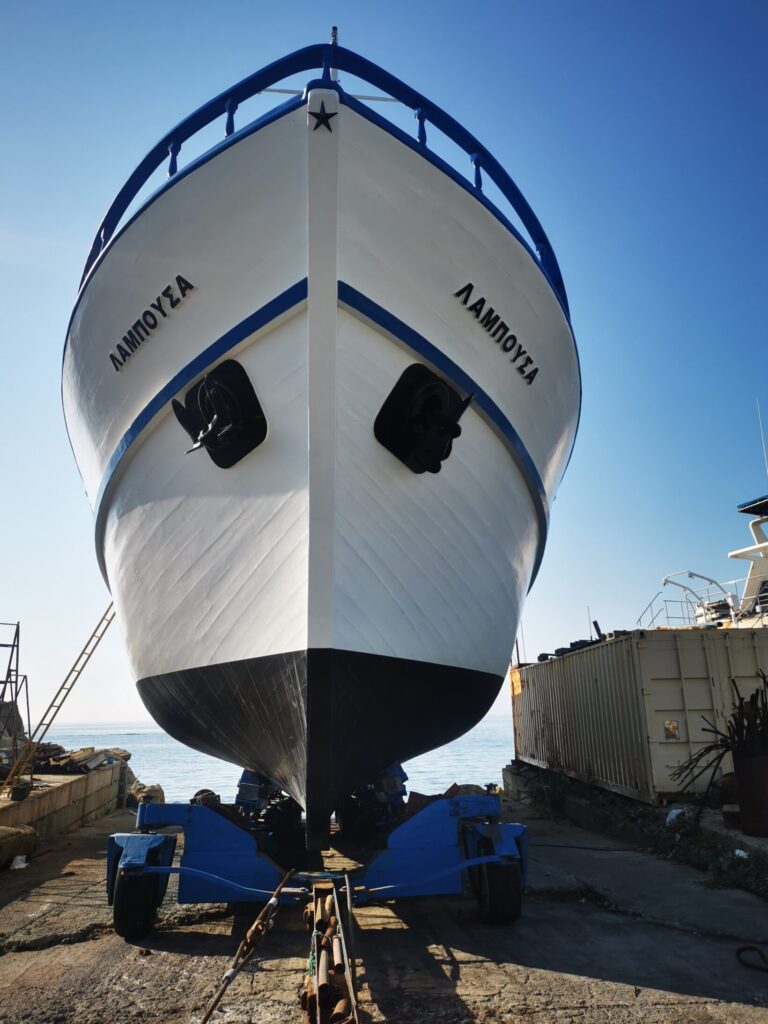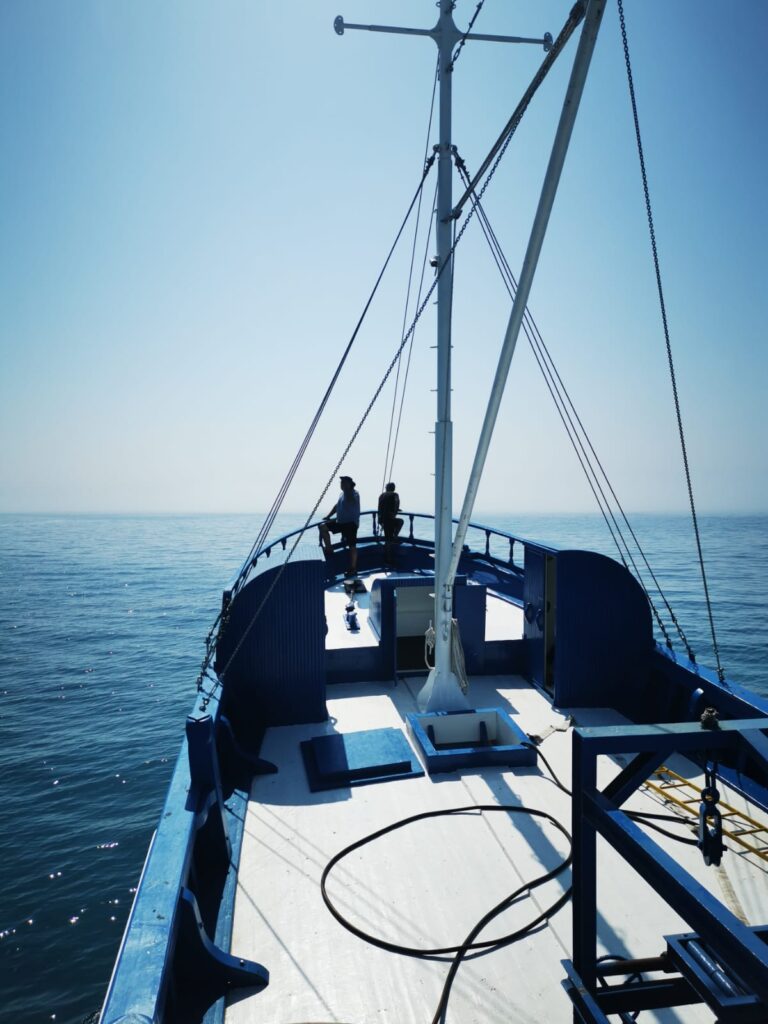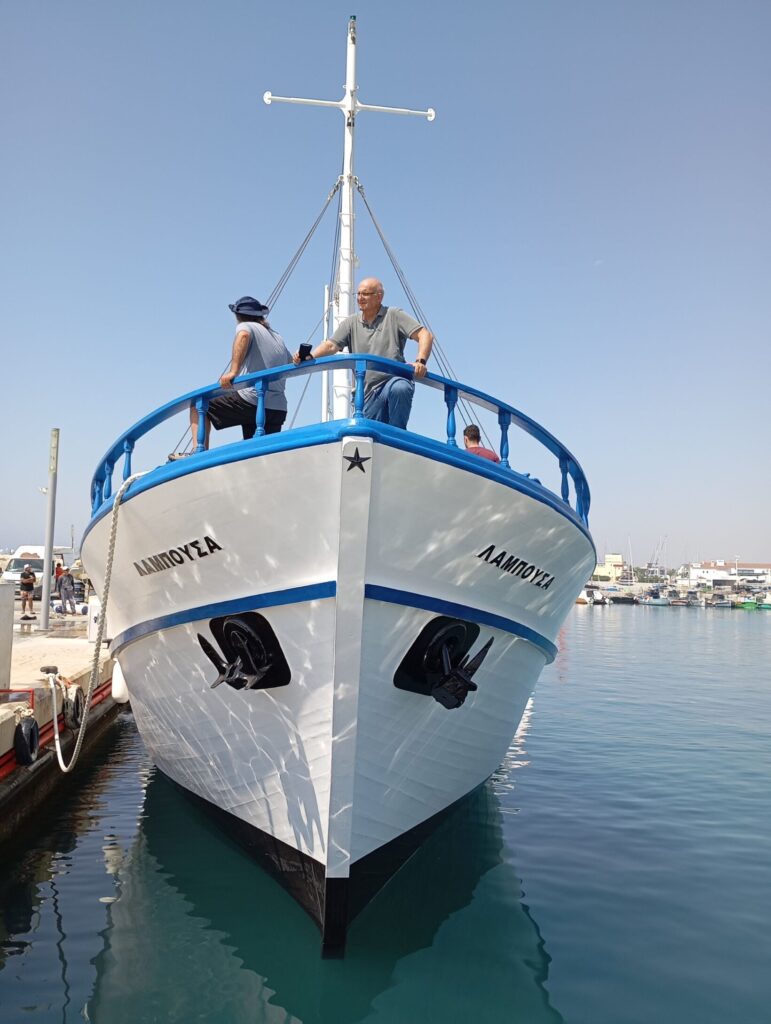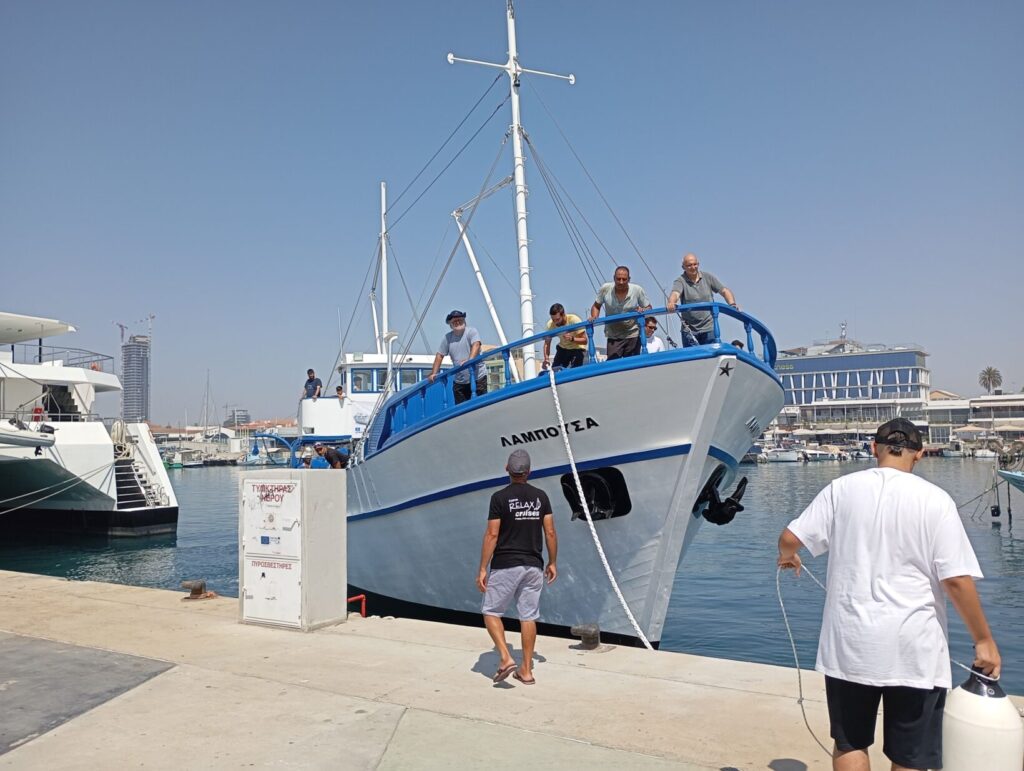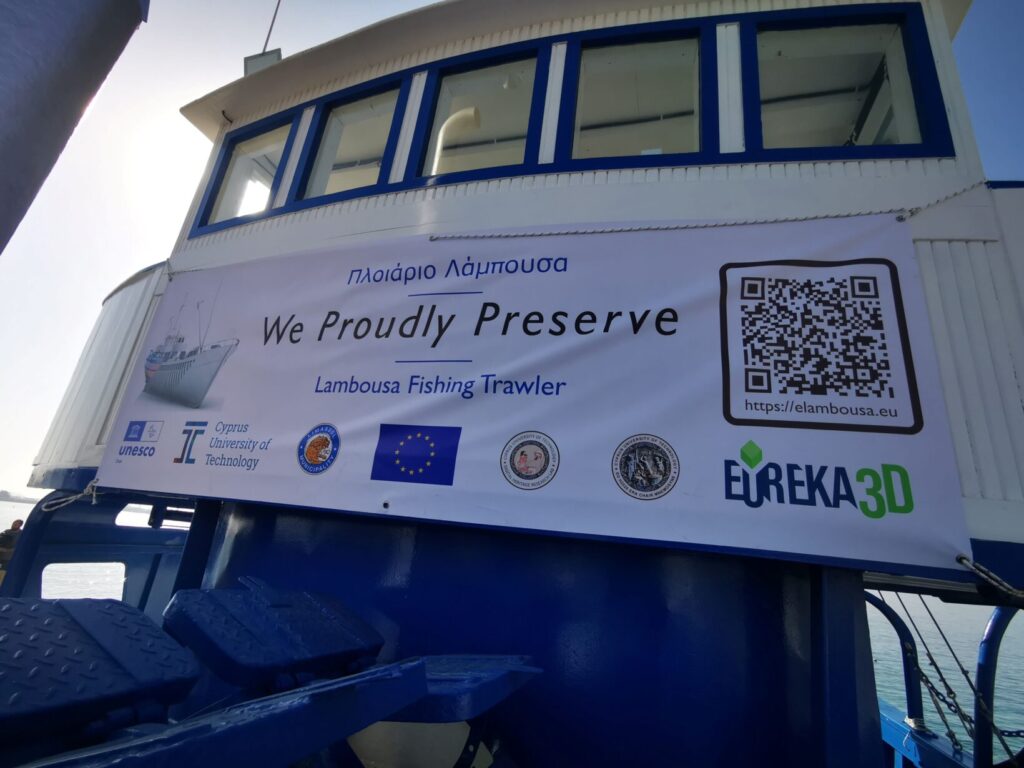So wrote the English poet John Masefield in his opening line of “Sea-Fever,” published in 1902. It is a fitting line for the Lambousa, the last surviving Liberty class fishing trawler in Cyprus, which returned to the sea today after almost four years of restoration and conservation work in the Karnagio shipyard.
This venerable boat, built in 1955, was saved from the breaker’s yard in 2006 after changes in European regulations on the fishing industry to preserve fish stocks. Decommissioned as a trawler, the Lambousa found a new life as a summertime tourist attraction in Limassol Marina until 2019. Even though safely moored in the harbour, an inspection revealed damage from the weather, salt water, and wear and tear had taken its toll on the boat, and, unless conservation was undertaken, this icon of Limassol and Cyprus’ history would be irreparably lost. The municipality decided to save the Lambousa, and the boat was moved to the Karnagio shipyard just before the COVID outbreak.
And there, Lambousa‘s story may have ended—another boat abandoned in a shipyard awaiting repair and delayed by the pandemic—were it not for the direct intervention of the former mayor, Nicos Nicolaides, who recognised the value of the Lambousa as a historic monument and was determined to see the boat once again serving Limassol as a key part in rebuilding Cyprus’ tourism industry.
Working in close cooperation with the Municipality of Limassol and the team of expert shipbuilders at the Karnagio shipyard, the UNESCO Chair on Digital Cultural Heritage has supported the restoration work by digitising the boat and researching its history as part of the EU-funded Mnemosyne and EUreka3D projects. This irreplaceable piece of Cypriot maritime history has been fully restored to its former glory and has, once again, returned to the sea, where it belongs.
The Lambousa will open to the public not only as a tourist attraction but as a floating museum, telling the history of the boat, stories of the fisherman lifestyle, and the importance of maritime history to Cyprus. The new museum will also engage the public with environmental concerns like overfishing and the climate crisis as part of its educational role. To support this new enterprise, the UNESCO Chair Digital Research Lab at the Cyprus University of Technology has created an online resource called eLambousa, allowing visitors to understand the significance of the Lambousa and keep its memory alive. The Lambousa was also selected this year to represent Cyprus, alongside the Castle of Paphos, in the recent European digital cultural heritage initiative TwinIT! and has been added to Europeana the pan-European digital repository for heritage resources.
We wish the Lambousa well in its new role serving the citizens and visitors to Limassol and thank the municipality for the opportunity to be invited to participate in this unique endeavour to save this piece of history for Cyprus. Together “We proudly preserve“.
